Professional, peer-reviewed papers about mutations and how they support a recent creation and fall within a biblical framework

Response to: “The Promises and Pitfalls of Correlating Y Chromosome Genetics to Human History, Review of: Traced: Human DNA’s Big Surprise by Nathaniel T. Jeanson”
Dr. Nathaniel T. Jeanson • March 26, 2025
Dr. Jeanson responds to a critique of his Traced from Dr. Carter.
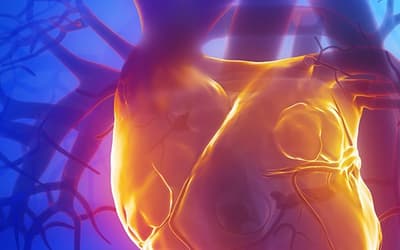
Heart Evolution: The Four Heart Types Are Unbridgeable by Evolution
Dr. Jerry Bergman • June 8, 2022
Not even plausible “just-so” stories are proposed to explain how one heart system evolved into a different system. Evolution is unable to explain their origin.

Testing the Predictions of the Young-Earth Y Chromosome Molecular Clock: Population Growth Curves Confirm the Recent Origin of Human Y Chromosome Differences
Dr. Nathaniel T. Jeanson • Dec. 4, 2019
The timescale for the human Y chromosome family tree has been a source of sharp disagreement within the creation/evolution debate.

Evidence for a Human Y Chromosome Molecular Clock: Pedigree-Based Mutation Rates Suggest a 4,500-Year History for Human Paternal Inheritance
Dr. Nathaniel T. Jeanson , et. al. • Dec. 4, 2019
Pedigree-based mutation rates act as an independent test of the young-earth creation and evolutionary timescales.

Problems with the U-Pb Radioisotope Dating Methods—3. Mass Fractionation
Dr. Andrew A. Snelling • Nov. 13, 2019
The evidence for grossly accelerated radioisotope decay during a past cataclysmic event such as the Genesis Flood has been well established.

Responding to Lightner’s Comments on Natural Selection: Points of Agreement and Disagreement
Dr. Jason Lisle • Jan. 30, 2019
My paper was criticizing what Guliuzza has publicly written in which he denies the reality of natural selection: a claim that he has never publicly retracted.
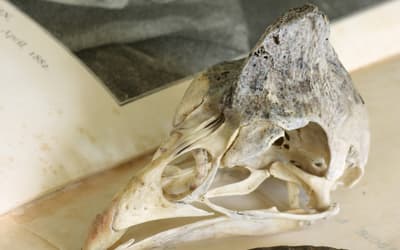
Refuting Dubious Claims Regarding Natural Selection
Dr. Jason Lisle • Dec. 5, 2018
Randy Guliuzza has made some controversial claims regarding the cause and nature of adaptation of organisms to their environment. We examine his claims.
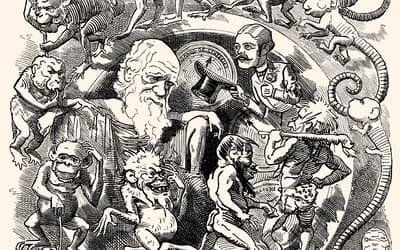
Response to “Still No Replacement of Darwin: A Reply to Nathaniel Jeanson’s Response to My Review of Replacing Darwin—The New Origin of Species”
Dr. Nathaniel T. Jeanson • Nov. 21, 2018
Frello’s recent critique is helpful progress in our discussion, and it argues for the strength of the science in Replacing Darwin.

Still No Replacement of Darwin—A Reply to Nathanial Jeanson’s Response to my Review of Replacing Darwin—The New Origin of Species
Stefan Frello • Nov. 21, 2018
I used to think that when creationists talk about creation and evolution as a clash between worldviews, they were wrong. Jeanson has helped me change my mind.
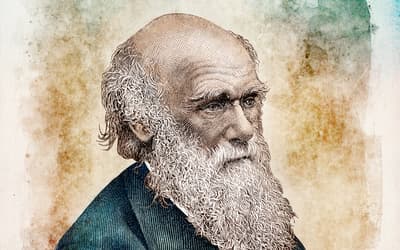
Response to “No Replacement of Darwin: A Review of Replacing Darwin—The New Origin of Species”
Dr. Nathaniel T. Jeanson • April 25, 2018
Ironically, Frello has actually done me a great favor; his review ends up bolstering my original claims.

No Replacement of Darwin
Stefan Frello • April 25, 2018
Jeanson takes on a formidable task: To show that the theory of evolution is wrong, and to replace it with biblical creation. To make it short: Jeanson fails.
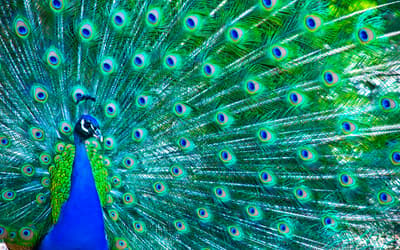
The Origin of Beauty: Contrasting the Handicap Hypothesis and Design Theory
David Woetzel • Dec. 13, 2017
Why should there be such “gratuitous beauty”? The plethora of extravagant biological characteristics prominently call out for an explanation.
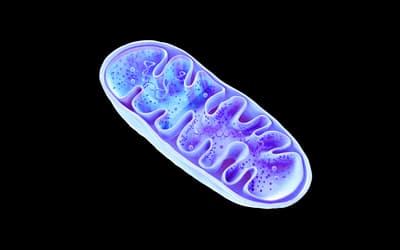
Response to “On the Creationist View on mtDNA”
Dr. Nathaniel T. Jeanson • Aug. 23, 2017
Frello criticizes papers that he hasn’t carefully read. Not surprisingly, his objections turn out to be unfounded.

On the Creationist View on mtDNA
Stefan Frello • Aug. 23, 2017
Dr. Nathaniel Jeanson claims to have documented a recent origin of humans, using mitochondrial DNA. A reader questions the results.

An Exponential Decay Curve in Old Testament Genealogies
Philip M. Holladay • Oct. 19, 2016
The lifespans of Old Testament people born after the Flood reveal a numerical pattern known as an exponential decay curve.
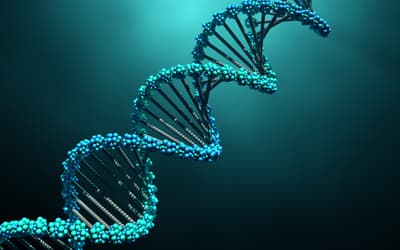
Beyond the DNA-Protein Paradox: A “Clutch” of Other Chicken-Egg Paradoxes in Cell and Molecular Biology
Derrick M. Glasco • Aug. 31, 2016
The DNA-protein paradox has long been a point of contention in the origin of life debate.

Big Gaps and Short Bridges: A Model for Solving the Discontinuity Problem
Change Laura Tan • July 6, 2016
This paper argues that the issue with the origin of life and the origin of biodiversity is not an issue of time, though deep time is problematical.
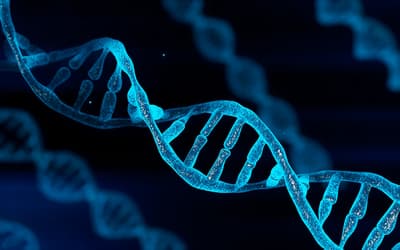
On the Origin of Human Mitochondrial DNA Differences, New Generation Time Data Both Suggest a Unified Young-Earth Creation Model and Challenge the Evolutionary Out-of-Africa Model
Dr. Nathaniel T. Jeanson • April 27, 2016
These results underscore the biblical model of human origins and simultaneously undercut the validity of the evolutionary out-of-Africa model.
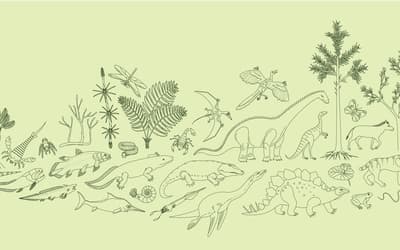
On the Origin of Eukaryotic Species’ Genotypic and Phenotypic Diversity
Dr. Nathaniel T. Jeanson , et. al. • April 20, 2016
This study shows that created heterozygosity, together with natural processes that are observable, is sufficient to account for species’ diversity.

Using Taxonomically Restricted Essential Genes to Determine Whether Two Organisms Can Belong to the Same Family Tree
Change Laura Tan • Nov. 4, 2015
How are all life forms connected? Are they linked by one giant family tree, a web, or a forest of family trees?
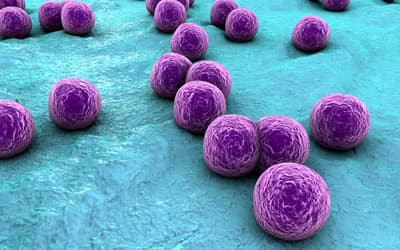
The Genesis and Emergence of Community-Associated Methicillin-Resistant Staphylococcus aureus (CA-MRSA): An Example of Evolution in Action?
Dr. Alan L. Gillen , et. al. • Oct. 14, 2015
We have seen a changing profile from HA-MRSA to CA-MRSA. This is potentially dangerous because the new strains are more virulent and aggressive.

Documented Anomaly in Recent Versions of the BLASTN Algorithm and a Complete Reanalysis of Chimpanzee and Human Genome-Wide DNA Similarity Using Nucmer and LASTZ
Jeffrey P. Tomkins • Oct. 7, 2015
Past evolutionary research in comparative DNA analysis between chimps and humans has employed a great deal of preferential and selective data analysis.
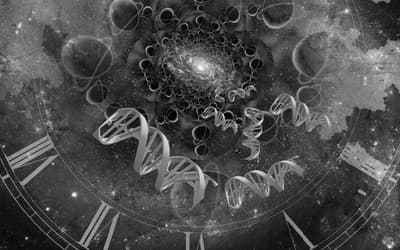
A Young-Earth Creation Human Mitochondrial DNA “Clock”: Whole Mitochondrial Genome Mutation Rate Confirms D-Loop Results
Dr. Nathaniel T. Jeanson • Sept. 23, 2015
New data agree with the expectations from D-loop results, further confirming the origin of humans within 6000 years and rejecting evolutionary timescales.

Is HIV-1 Losing Fitness Due to Genetic Entropy?
Yingguang Liu • July 1, 2015
HIV-1 is an important example which shows genetic entropy operating throughout the biological realm, even while meaningful genetic adaptations are occurring.

Mutations in the nef Gene make HIV-1 More Virulent
Yingguang Liu • June 17, 2015
Mutational degeneration of the nef gene manifests as increased pathogenicity of HIV-1.

Mitochondrial DNA Clocks Imply Linear Speciation Rates Within “Kinds”
Dr. Nathaniel T. Jeanson • June 3, 2015
The mechanism of speciation remains one of the most contested scientific questions among both evolutionists and creationists.

Cyclic Selection in HIV–1 Tropism: Microevolution That Is Going Nowhere
Yingguang Liu • April 29, 2015
The molecular interaction of HIV-1 is merely cyclic fine-tuning of an existing function and illustrates the broken relationship between the virus and the host.

Natural Selection: Assessing the Role It Plays in our World
Dr. Jean Lightner • March 4, 2015
Natural selection is controversial among many scientists, both in evolutionary and creationary circles.
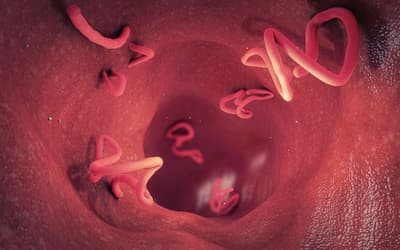
Parasitology and Creation
Dr. Matthew E. Ingle • Feb. 4, 2015
As we learn more about parasites, which don’t seem to be “good” design, we will understand better how the parasitic lifestyle resulted from the Fall.

A Response to “Does Natural Selection Exist?”: Creatures’ Adaptation Explained by the Design-based, Organism-driven Approach: Part 3
Randy J. Guliuzza • Nov. 5, 2014
This third installment is a continuation of my response to a recent critical paper (Jeanson 2013).
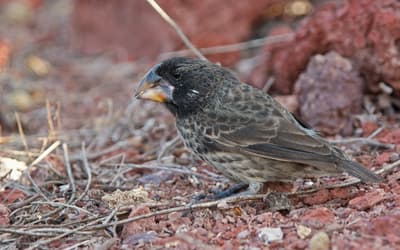
Reply to “A Response to ‘Does Natural Selection Exist?’”
Dr. Nathaniel T. Jeanson • Nov. 5, 2014
In this three-part ~35,000-word response, Guliuzza (2014a, b, c) fails to clearly define his terms and/or use them consistently.
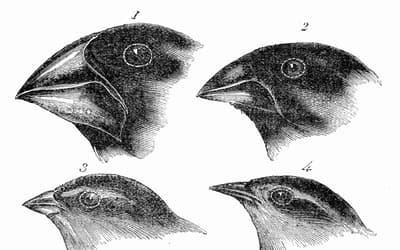
A Response to “Does Natural Selection Exist?”: Creatures’ Adaptation Explained by the Design-based, Organism-Driven Approach: Part 1
Randy J. Guliuzza • Oct. 29, 2014
This paper responds to a 2013 Jeanson paper critical of a series of Acts & Facts articles published by the Institute for Creation Research (ICR).

A Response to “Does Natural Selection Exist?”: Creatures’ Adaptation Explained by the Design-based, Organism-driven Approach: Part 2
Randy J. Guliuzza • Oct. 29, 2014
This second installment is a continuation of my response to a recent critical paper (Jeanson 2013) on a series of Acts & Facts articles.

The Second Law of Thermodynamics and the Curse
Dr. Danny R. Faulkner • Nov. 13, 2013
Many recent creationists believe that the second law of thermodynamics came into being as a result of the Fall or the curse. I argue that this is not supported by Scripture nor science.

The Human Beta-Globin Pseudogene Is Non-Variable and Functional
Jeffrey P. Tomkins • Aug. 21, 2013
The HBBP1 gene appears to be a highly functional and cleverly integrated feature of the human genome that is intolerant of mutation.

Does Natural Selection Exist?
Dr. Nathaniel T. Jeanson • Aug. 7, 2013
How did the modern diversity of life arise from the created kinds of Genesis 1 and from the kinds taken on board the Ark? Did natural selection play a role?
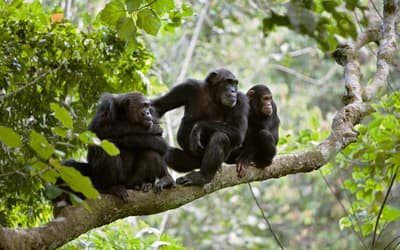
Comprehensive Analysis of Chimpanzee and Human Chromosomes Reveals Average DNA Similarity of 70%
Jeffrey P. Tomkins • Feb. 20, 2013
A common evolutionary claim is that the DNA of chimpanzees and humans are nearly identical. Modern DNA research is showing much higher levels of discontinuity.

Is Young-Earth Creationism a Bad Choice?
Callie Joubert • Nov. 14, 2012
Any understanding of Scripture that excludes or indicts the divine Himself is necessarily flawed and false.
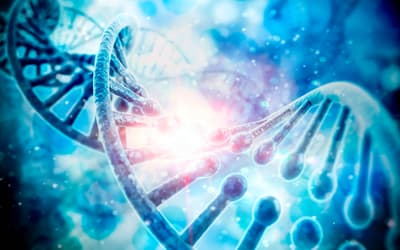
An Evaluation of the Myth That “Nothing in Biology Makes Sense Except in the Light of Evolution”
Dr. Jerry Bergman • Feb. 8, 2012
I reviewed both the textbooks used for life science classes at the college where I teach and those that I used in my past university course work.

Genome-Wide DNA Alignment Similarity (Identity) for 40,000 Chimpanzee DNA Sequences Queried against the Human Genome is 86–89%
Jeffrey P. Tomkins • Dec. 28, 2011
To provide a global set of analyses, large-scale comparative DNA sequence alignments between the chimpanzee and human genomes were performed with the BLASTN algorithm.
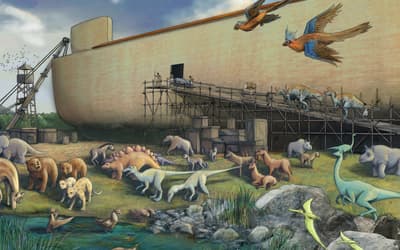
Determining the Ark Kinds
Dr. Jean Lightner , et. al. • Aug. 1, 2014
This research effort provides information necessary for the best possible reconstruction of the animal kinds preserved on the Ark for the Ark Encounter.
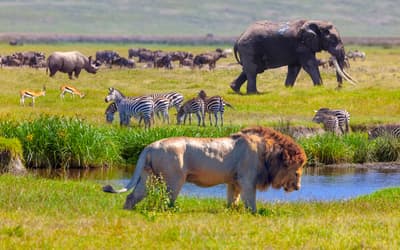
Created Kinds and Essential Natures: A Biblical and Philosophical Response to Evolutionists
Callie Joubert • July 27, 2011
Assuming that “natural kind” is a merely biological rather than metaphysical would be a mistake, resulting in Christians having difficulty evaluating and correcting rival views to created kinds.
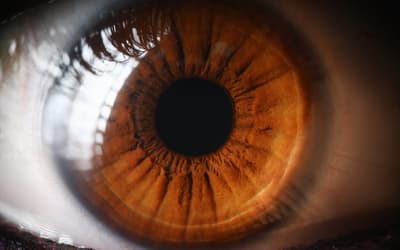
The Human Retina Shows Evidence of Good Design
Dr. Jerry Bergman • June 8, 2011
Darwinists try to disprove the argument from design by providing examples of what they claim are poor design.
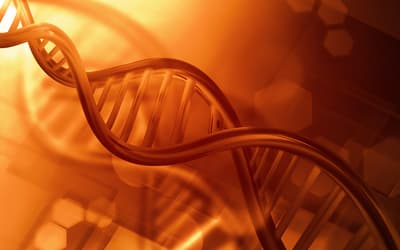
Toward an Accurate Model of Variation in DNA
Mitchel Soltys • March 2, 2011
The Bible’s description of created kinds implies an information model which uses variables. The findings in this paper show that a model which uses variables forms a basis for understanding biology.
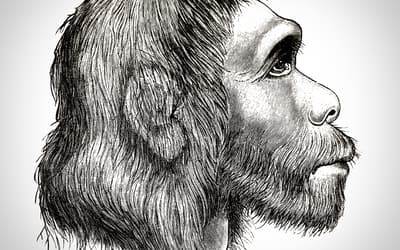
Those Enigmatic Neanderthals
Anne Habermehl • Jan. 13, 2010
Young-earth creationists rightly consider that Neanderthals were human, but are divided on various issues.

Fraud and Forgery in Paleoanthropology
Dr. Jerry Bergman • Dec. 23, 2009
A review of the history of paleoanthropology leads to the conclusion that the discipline is far less objective than that for physics, chemistry, or even biology.

Towards a Creationary Classification of Mutations
Jonathan Bartlett • Dec. 2, 2009
Mutations are normally classified according to their proximal effect on an organism’s fitness, whether beneficial, deleterious, or neutral.
Mutations on Answers Research Journal
Evolutionary ideas assert that mutations are one of the major driving forces for molecules-to-man evolution. A mutation is any change in the sequence of DNA bases in the genome of an organism. Over billions of years, evolutionists propose that random mutations provided the raw genetic variation needed to add novel genetic information to result in new structures and functions that allow one kind of organism to evolve into a different kind of organism.
The aim of these research papers in Answers Research Journal (ARJ) is to show what mutations can achieve in the present through examples (e.g., antibiotic-resistant bacteria) and how mutations lead to degradation of organisms in support of a recent creation and subsequent fall within a biblical framework. These professional, peer-reviewed papers address issues related to mutations and discuss how that relates to other disciplines. Our journal considers mutation in light of creation, evolution, the Fall, DNA clocks, human and chimp DNA comparisons, genetics, baraminology, and more.
Neo-Darwinists propose that beneficial mutations made changes to organisms that were then either selected for or against in a particular environment (natural selection). Then over billions of years, this led to the great diversity of life, both past and present. However, observable evidence clearly shows that mutations cannot do what evolution requires. Mutations result in either no change in the organism or a detrimental change, not the gain of information and the gain of novel structures and functions required for evolution. Mutations can result in variation and speciation within a biblical kind but not what is necessary for molecules-to-man evolution.
